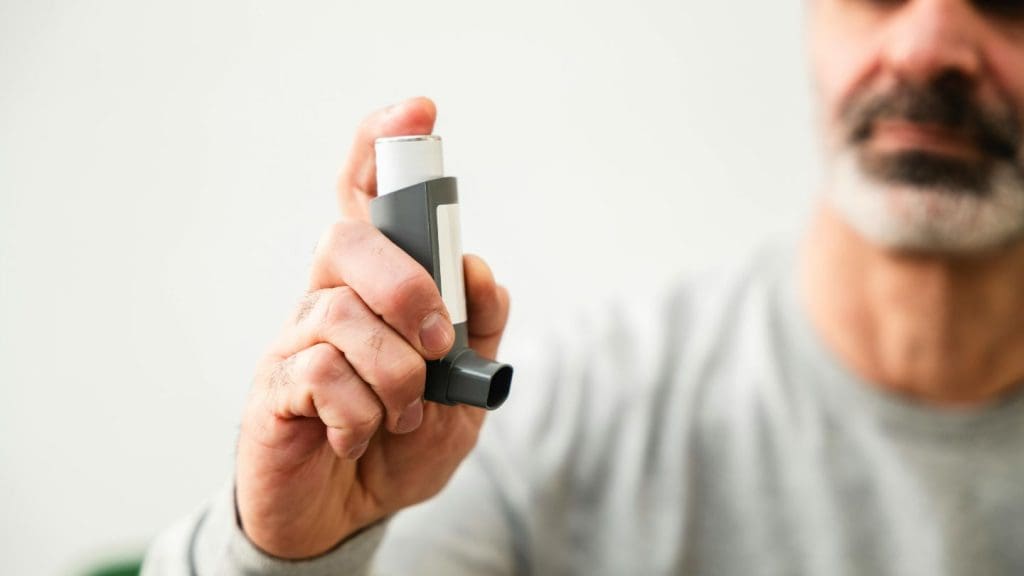Mold exposure isn’t just an inconvenience; it can trigger a cascade of physical, cognitive, and emotional symptoms that are often overlooked or misdiagnosed. From mild allergic reactions to full-blown illness from mold symptoms, this blog explores how mold affects the body, what to watch for, and when to act. Left untreated, these symptoms can interfere with daily life, impair your immune system, and escalate into long-term health conditions like CIRS mold illness, making awareness and timely intervention critical.
What Is Mold Sickness?
Mold sickness is a broad term for health issues caused by exposure to indoor mold, especially in water-damaged buildings. It can range from allergic responses to a complex condition called Chronic Inflammatory Response Syndrome (CIRS). Unlike simple mold allergies, CIRS mold illness is a systemic inflammatory condition triggered by biotoxins, with symptoms that can affect multiple organs. Mold sickness is often overlooked because symptoms, fatigue, headaches, joint pain, resemble other conditions. Many homes hide contamination behind walls or in HVAC systems, making mold illness a silent epidemic.
Why Mold Exposure Affects the Body
When mold spores or mycotoxins are inhaled or absorbed, they can cause inflammation, immune dysfunction, and neurological disturbances. People with genetic susceptibility or preexisting conditions may be especially vulnerable to mold and sickness, particularly those with the HLA-DR gene that prevents proper biotoxin clearance. Prolonged mold exposure can cause, digestive problems, chronic inflammation, respiratory strain, and cognitive issues such as brain fog or memory loss. Even low-level contamination can create long-term mold health risks if the moisture problem isn’t resolved.
37 Mold Exposure Symptoms to Watch For

The symptoms of CIRS mold symptoms are wide-ranging. They don’t follow a neat pattern, which is why mold-related illness is frequently misdiagnosed as fibromyalgia, chronic fatigue, or depression. Below are the 37 most commonly reported sicknesses from mold exposure.
Respiratory & Sinus Issues
- Persistent coughing
- Shortness of breath
- Nasal congestion
- Sinus infections
- Wheezing or chest tightness
The link between mold and asthma is strong. Spores aggravate airways, triggering wheezing and asthma attacks. Controlling indoor humidity and scheduling expert mold remediation can significantly reduce asthma flare-ups.
Neurological and Cognitive Impacts
- Brain fog
- Dizziness or vertigo
- Poor concentration
- Headaches
- Sensitivity to light or sound
Skin & Eye Reactions
- Rashes or hives
- Itchy or burning skin
- Red, irritated eyes
- Dry, peeling skin
- Unexplained breakouts
A mold rash often appears as itchy red patches, bumps, or blisters that can peel or burn. These reactions may come with coughing or sinus pressure. Effective relief means eliminating the source through professional mold removal, not just applying topical creams.
Digestive and Metabolic Problems
- Bloating and gas
- Nausea
- Diarrhea or constipation
- Loss of appetite
- Food intolerances
Digestive issues like bloating, nausea, or food sensitivities can stem from mold exposure and digestive problems caused by inhaling spores or mycotoxins. Professional remediation and indoor air quality improvements are essential for recovery.
Mood, Sleep & Mental Health Effects

- Depression
- Anxiety
- Irritability
- Panic attacks
- Insomnia or poor sleep quality
Inflammatory and Hormonal Symptoms
- Muscle cramps or aches
- Joint pain without swelling
- Irregular periods
- Hormonal imbalances
- Cold hands or feet
- Increased thirst and urination
- Night sweats
Immune & Systemic Red Flags
- Frequent colds or infections
- Low-grade fever
- Static shocks or electrical sensitivity
- Numbness or tingling
- Unexplained weight changes
If you’re noticing several of these symptoms together, it could indicate CIRS mold symptoms rather than isolated health problems. This is especially true if the symptoms worsen in specific indoor environments. If coughing, fatigue, or brain fog worsen at home and ease when you leave, it’s time to ask: how do I know if mold is making me sick? Keeping a symptom diary and scheduling professional inspection help confirm a mold-related illness.
Mold Sickness or Something Else?
Misdiagnosis is common. Conditions like Lyme disease, long COVID, and multiple sclerosis can mimic what is CIRS symptoms. However, if your health deteriorates after moving into a new home or after a flood or HVAC issue, it’s worth considering mold cirs symptoms as a root cause.
What to Do If You Suspect Mold Illness
- Get your environment tested – ERMI, HERTSMI, and air quality tests can confirm mold presence.
- Track your symptoms – A daily journal helps identify environmental triggers.
- Seek functional testing – Look into visual contrast sensitivity (VCS) testing or mycotoxin panels.
- Consult a CIRS-literate doctor – Traditional labs may not detect the problem.
Professional testing is crucial, especially if you’ve tried multiple treatments with little improvement. Diagnosing CIRS symptoms requires a multi-layered approach.
Why DIY Mold Removal Isn’t Enough
Even visible mold cleanup doesn’t guarantee health safety. Spores and mycotoxins can remain airborne, travel through HVAC systems, or embed in porous materials. Proper remediation requires:
- Negative air pressure containment
- HEPA filtration
- Removal of contaminated materials
- Moisture control and prevention
Skipping professional remediation puts your recovery, and your family’s health, at continued risk.
Final Thoughts
The 37 symptoms listed above aren’t just isolated complaints, they form a mosaic of illness from mold symptoms that could point to a larger environmental health crisis. If you suspect mold is impacting your well-being, take your symptoms seriously. Early identification and professional remediation are the keys to recovery.
For those struggling with CIRS mold symptoms, trust the experts at Mold-B-Gone, a leading mold removal company in Atlanta that homeowners and businesses rely on. Our team offers advanced mold inspection, comprehensive remediation, and indoor air quality solutions tailored to your environment. Whether you’re experiencing a few suspicious symptoms or the full spectrum of 37 CIRS symptoms, you deserve a clean space and a clear path to health.
Frequently Asked Questions:
What is mold sickness and how is it different from allergies?
Mold sickness refers to health problems caused by exposure to indoor mold, especially in water-damaged environments. While mold allergies may only cause sneezing or itchy eyes, mold sickness can lead to a more serious condition called Chronic Inflammatory Response Syndrome (CIRS). CIRS is a systemic inflammatory illness triggered by mold biotoxins that can affect multiple organs.
How do mold spores and mycotoxins affect the body?
When inhaled or absorbed, mold spores and mycotoxins can trigger inflammation, weaken the immune system, and disrupt normal neurological functions. Some individuals, particularly those with genetic predispositions like the HLA-DR gene, cannot properly eliminate biotoxins, making them more vulnerable to prolonged illness and worsening symptoms.
What are the most common symptoms of CIRS mold illness?
CIRS-related mold illness symptoms include persistent coughing, sinus congestion, brain fog, dizziness, rashes, digestive issues, anxiety, insomnia, joint pain, and frequent infections. Because these symptoms affect multiple systems in the body, they are often misdiagnosed as chronic fatigue, depression, or fibromyalgia.
Can mold sickness be mistaken for other conditions?
Yes. Mold-related illness is often confused with Lyme disease, long COVID, and even autoimmune disorders like multiple sclerosis. This is why tracking symptoms, noting environmental triggers, and undergoing specialized tests such as visual contrast sensitivity (VCS) or mycotoxin panels are important for accurate diagnosis.
Why is professional mold remediation more effective than DIY cleaning?
DIY cleaning may remove visible mold, but it doesn’t eliminate airborne spores or hidden contamination in HVAC systems, walls, or porous materials. Professional remediation uses containment, HEPA filtration, and moisture control to completely remove mold and prevent it from returning. This ensures both the home and its occupants are protected from long-term exposure.

